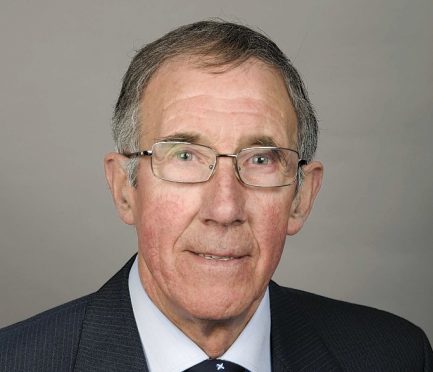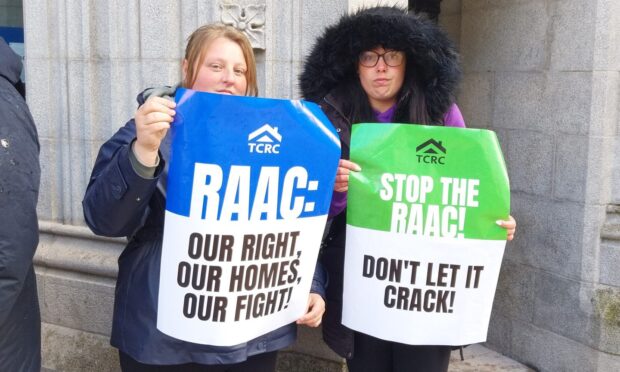An SNP councillor has been accused of “cronyism” after he lobbied his colleagues to support his wind turbine application.
Councillor Sandy Duncan first lodged proposals to build a 150ft turbine at his Beechwood property at Forglen three years ago.
The project attracted a flurry of public objections and was subsequently quashed by the Court of Session.
But when it came back to the council for a second time it was narrowly approved by the Banff and Buchan committee, despite a recommendation from planners to block the scheme.
Now it has emerged that Mr Duncan, who represents Turriff, sent e-mails to the SNP and independent members of the committee before the vote, seeking support.
It is understood SNP councillors Ross Cassie, John Cox, Charles Buchan and Brian Topping received the message.
Independent members Hamish Partridge, Ian Tait and Michael Watt were also contacted.
Last night Alexander Burnett, the Scottish Conservative MSP for Aberdeenshire West, said: “People will be appalled that a serving councillor should seek to influence the planning process in this way.
“This episode has all the hallmarks of blatant political cronyism within the SNP group and raises serious questions about the impartiality of the Banff and Buchan area committee on local planning issues.”
Last week Aberdeenshire’s full council met in private to take yet another look at the application and revoked the planning permission.
Mr Duncan has now referred himself to the Standards Commission, which will consider if he has breached the code of conduct.
But Mr Duncan last night remained defiant and denied any wrongdoing.
He said: “I think (the Conservatives) are trying to make political gain out of this.
“I sent the e-mail in defence of our application. The fact I set the e-mail shows there is no cronyism – if the decision was already cut and dried I wouldn’t have sent it.”
Mr Duncan said his mistake was using his official Aberdeenshire Council e-mail address to send the messages, adding: “I was contacting them as an applicant”.
A spokesman for Aberdeenshire’s SNP council group echoed Mr Duncan’s comments that the Tories are making political gain of the situation.
The spokesman said: “I’m sure people will be interested to know exactly how a Tory MSP is in a position to be commenting so selectively on the content of what remains a confidential council paper.
“In doing so, Mr Burnett has made a completely unwarranted and intemperate attack on the integrity of all councillors on the Banff and Buchan area committee.”
He added that although a councillor should not “seek to use their position to gain undue influence”, they should not be treated differently to public applicants who can lobby for their projects.
The independent members of the Banff and Buchan committee have distanced themselves from the scandal.
Mr Partridge confirmed he had received Mr Duncan’s message but said he did not respond.
He added: “I understand there was an e-mail. I didn’t respond as it was a planning matter. My judgement on the application I still feel is accurate.”
Mr Tait and Mr Watt both voted against the proposals.
Aberdeenshire Council’s chief executive Jim Savege said the Beechwood turbine scheme was put before a special meeting of the authority on Wednesday, which was called after the matter came to light.
“Since the latest decision on this planning application was taken back in September, new information emerged which required us to reconsider,” Mr Savege said.
“Full council met on Wednesday and during that meeting they decided to instruct a special meeting of the infrastructure services committee to make the final ruling on this application.”
It is understood the application will be reopened for debate and decision when the infrastructure committee meets either in December or February.










